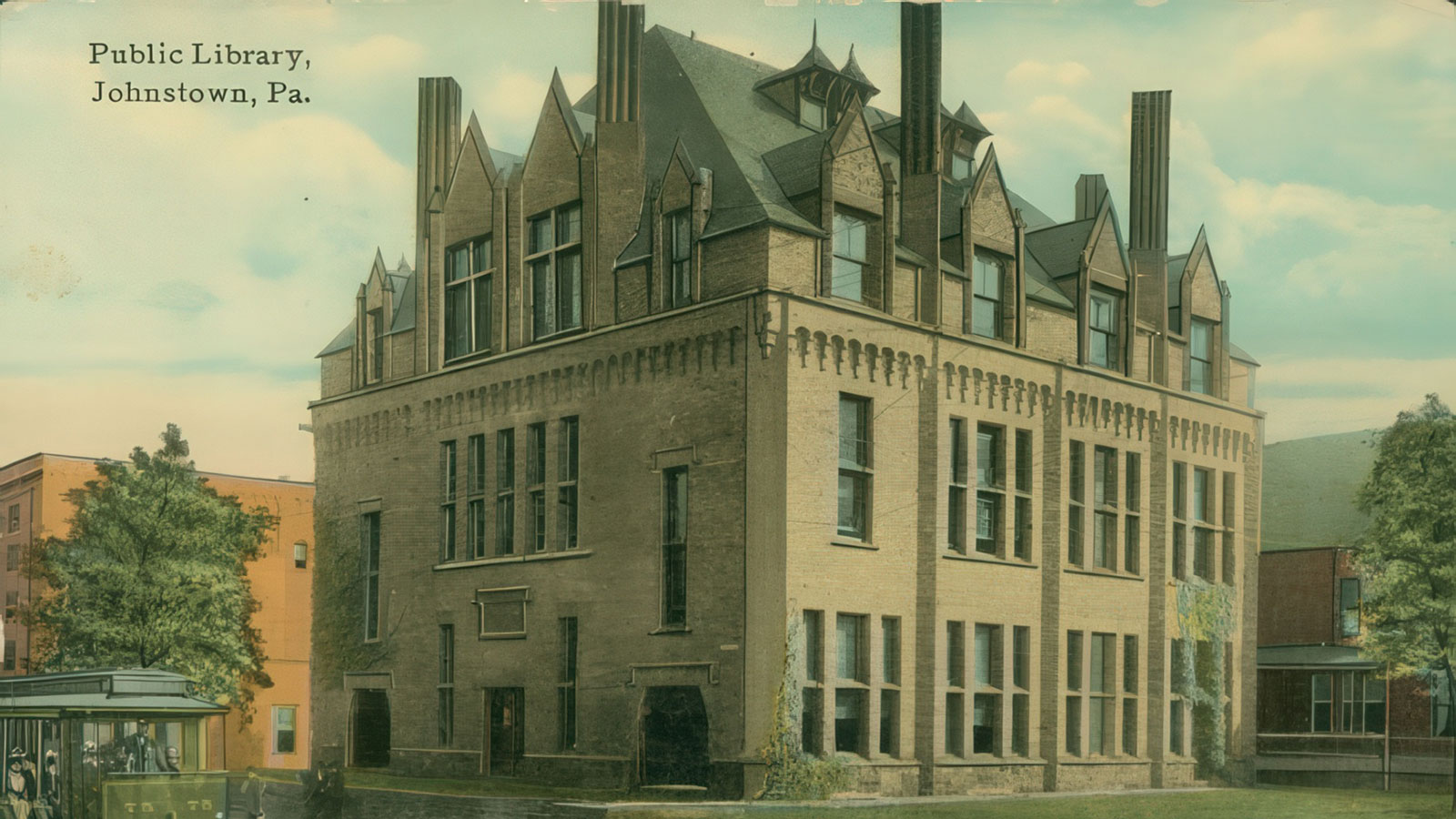
“If the Association will allow me to pay the cost of this restoration, I shall be very grateful to it indeed.” Andrew Carnegie in a November 28, 1889, letter to the Cambria Library Association. Carnegie was a member of the South Fork Fishing & Hunting Club, which owned the dam that failed on May 31, 1889, causing the great Johnstown flood. His donation enabled the town to rebuild the library on the site of the previous one, which had been destroyed. Addison Hutton of Philadelphia, architect for the $55,000 project, built the French Gothic style structure. The foundation of the building consists of 20 massive stone piers of circular section, 5 to 7 feet in diameter. The woodwork throughout the building is select Pennsylvania pine, finished in its natural color. The stairway alcoves on the first floor are laid with white marble tiles, skirted in black marble. The third story features dormers and the building has eight massive chimneys, two on each side.
The first floor of the new library featured lecture rooms, with folding opera chair seating for 300. The second floor housed the “library proper” and two “pleasant rooms,” used for class work and special reading rooms. The third floor featured an elegant gymnasium, with a padded running track, which forms a mezzanine around the uppermost part of the building. During the 1892 dedication and official opening of the Carnegie Library, one guest said: “We find ourselves comfortably seated in a building that is substantial in its material, tasteful in its appointments, convenient to its arrangements, fair in its proportions, classic in its design and beautiful in its architecture.”
The building functioned as a library until it was reopened as the Johnstown Flood Museum in 1973, and it is listed on the National Register of Historic Places.
(Submitted by Shelley Johansson on behalf of Heritage Johnstown, which owns and operates the Johnstown Flood Museum today. Attached is a color postcard from 1907).





